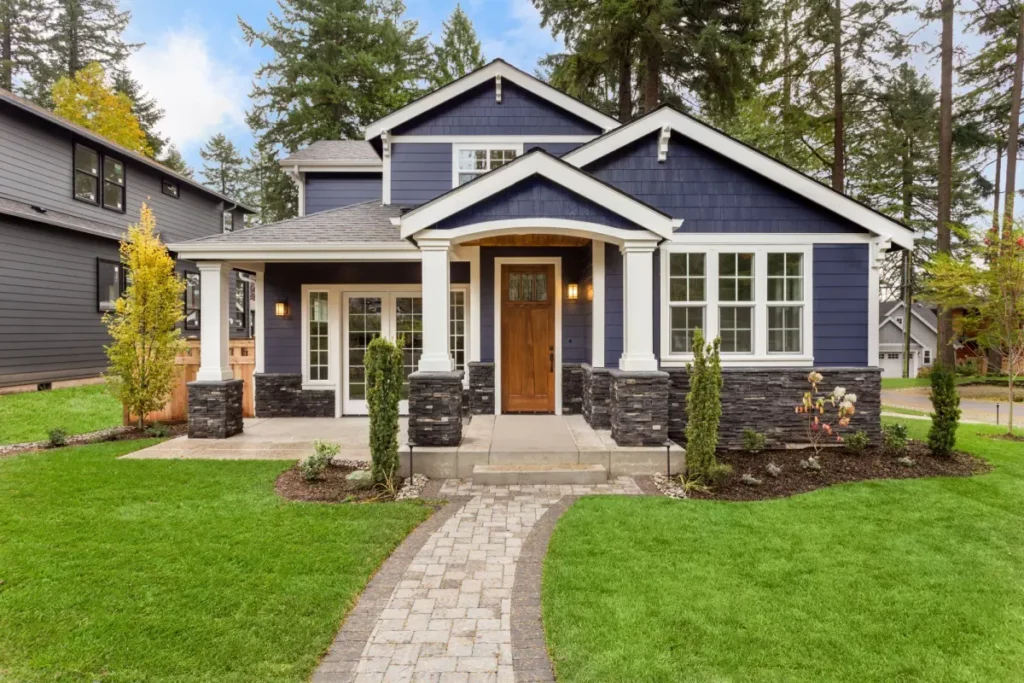We often get stressed over small purchases, like buying a new gadget or facing an unexpected bill. But what about buying a house? This could be one of the biggest financial decisions you’ll ever make. The constant thinking of how to save money for a house can be overwhelming. But the good news is, it doesn’t have to be. Let’s explore seven ways to save up for a house.
KEY TAKEAWAYS
- You should save 15% to 45% of your home’s purchase price for the down payment, closing costs, and furniture.
- Create a budget and stick to it, dedicating as much as possible to home savings.
- Check if you can qualify for homebuyer programs like FHA and USDA loans.
- Review and adjust your savings plan as needed.
How Much Should I Save Before Buying A House?
Before you start saving, you need to know how much money to save for a house, right? You must consider your down payment, closing costs, and moving expenses for this. This all depends on the price of the house, the location, and your credit score.
First and foremost, you need to start by saving for the down payment on the house. That’s between 3% to 20% of the house’s purchase price. If the house you’re looking for is $300,000, you must save around $9,000 to $60,000.
Next comes the closing costs. The fees for finalizing your mortgage range from 2% to 5% of the home’s sale price. This means that for the same $300,000 house, you will need to save between $6,000 and $15,000.
But that’s not all. You must also know how to budget and save money for furniture and appliances. This amount can vary based on how much furniture and appliances will enter the new house.
Determining Your Down Payment
The amount you save on your down payment determines the terms of your mortgage. A 20% down payment on your home is the best choice. Why? The most obvious reason is that you are much closer to paying off your house. But more importantly, you don’t have to pay for private mortgage insurance (PMI).

PMI is required when your down payment is less than 20% of the home’s value. If you fail to repay your loan, it covers the lender and is added to your monthly payments. Its yearly cost is around 1% of your outstanding loan balance.
But if you can’t afford to put down 20%, don’t worry. A smaller down payment of 5% to 10% is okay. It’s just that you will have to pay for PMI, too. You can have it removed when the outstanding balance is less than 80% of the home’s original value. Also, lenders are required to terminate PMI when the loan-to-value ratio reaches 78%.
Key Strategies to Save Enough Money to Buy a House
Now that you know how much you need for a down payment, let’s explore seven strategies for saving money for a house.
Create a Detailed Budget
Have you heard of the 50/30/20 rule? This budgeting method requires 50% of your monthly income for necessities like groceries, transportation, and utilities and 30% for non-essential expenses like dining out and entertainment. You will dedicate the remaining 20% to saving for your dream home.
If possible, reduce your non-essential expenses to 20% of your monthly income to increase your savings to 30%. This will help you reach your goals faster.
Build an Emergency Fund
Before saving for a down payment, set aside a portion of your paycheck into your emergency fund. You can start saving for your home when you have enough money in your emergency fund to cover three to six months of living expenses. Your emergency fund will ensure you won’t touch your house savings when dealing with financial stress, like losing your job or facing a medical emergency.
Set Up a Separate Account Just for Home Savings
One of the best long-term ways to save for a house is by opening a high-yield savings account dedicated to your home. This will keep your savings organized while earning interest, and your home savings will grow faster without any extra effort from your side.
Consider setting up automatic transfers if you forget to transfer part of your paycheck into your savings account.
Focus on Cutting Down and Managing Existing Debt
Clearing up debt is one of the fastest ways to save money for a house. There are two main ways to pay off your debt effectively. The first method is called the snowball method. Here, you start by paying off your smallest debt. Once that’s paid off, you move on to the current smallest debt until you have paid off everything.
The second method is the avalanche method, in which you start by paying off your highest-interest debt to save money on interest. Once that’s cleared up, you move on to the new debt with the highest interest rate, and so on.
Also, see if you can refinance any loans at a lower interest rate.
Boost Your Earnings with Side Jobs and Career Moves
If you’re wondering how to save money for a house on a low income, why not increase your income? You can start by negotiating your income with your employer or applying for better-paying positions. If that’s not an option now, you can take on a side job.

You can use platforms like Upwork, Fiverr, and Freelancer to find freelance jobs. These websites connect you with clients looking for different services. You can set up your fees and earn anywhere from $15 to $100 per hour.
If you’re willing to offer ridesharing and delivery services, you can work for Uber, Lyft, and DoorDash. To work with these companies, you must have your own vehicle, insurance, and a driver’s license. You can earn $10 to $25 an hour on delivering food and driving passengers on these apps.
If you have an academic education and teaching experience, you can sign up for VIPKid, Chegg Tutors, or Wyzant to explore tutoring opportunities. You can make $14 to $60 an hour.
You can also explore other side gigs. If you like pets, consider pet sitting or dog walking by signing on to platforms like Rover and Wag. If you are creative and crafty, you can sell handmade products on Etsy and Amazon Handmade.
If none of these apply to you, I’m sure you have some stuff that you no longer use. So why not sell them on platforms like Facebook Marketplace and Craigslist?
Maximize Savings with Homebuyer Programs and Tax Perks
If you’re having difficulty saving for a down payment, don’t worry, as you might still be close to your homeownership dreams. How? There are different types of homebuyer programs that require small or no down payment.
First, you have the FHA (Federal Housing Administration) Loans. These are designed to help first-time homebuyers and people with less-than-perfect credit. If you are employed with a steady income and have a credit score of 580 or higher, you are only required to pay a 3.5% down payment. If your credit score is lower, you must pay a 10% down payment. Also, the interest rates on FHA loans are relatively low compared to conventional mortgages.
Your second option is to apply for USDA (United States Department of Agriculture) Loans. As the name suggests, this type of loan is backed by the U.S. Department of Agriculture for those who want to buy a house in rural and suburban areas.
Unlike FHA loans, USDA loans don’t require a down payment. The interest ranges from 6.25% to 7%. To qualify, your household income should be below 115% of the median income for the area and have a credit score of at least 640.
Once you become a homeowner, you may benefit from tax perks like the mortgage interest deduction. If you itemize your deductions, you can deduct the interest paid on mortgage debt up to $750,000 ($375,000 if married filing separately). This can reduce your taxable income, potentially lowering your tax bill.
Regularly Review and Adjust Your Savings Plan
Your financial situation and goals can change over time, and so should your strategy. For example, if you get a raise or encounter unexpected expenses, you may need to adjust your goal timeline accordingly. So, track your progress at least every month and reassess your savings strategy as needed.
Understanding how to save money for a house is the key to getting you there. Remember, every little bit helps. So, apply these tips on saving for a house today, and before you know it, you’ll be unlocking the door of your new home.
Saving for a house may seem daunting, but with the right strategies, it becomes a manageable and rewarding goal. By setting up a detailed budget, building an emergency fund, and focusing on paying down debt, you can steadily work towards your dream of homeownership.
Utilizing high-yield savings accounts, exploring side jobs, and taking advantage of homebuyer programs can further boost your efforts. Most importantly, regularly reviewing and adjusting your savings plan ensures you stay on track despite life’s changes. Every step you take brings you closer to unlocking the door to your new home.